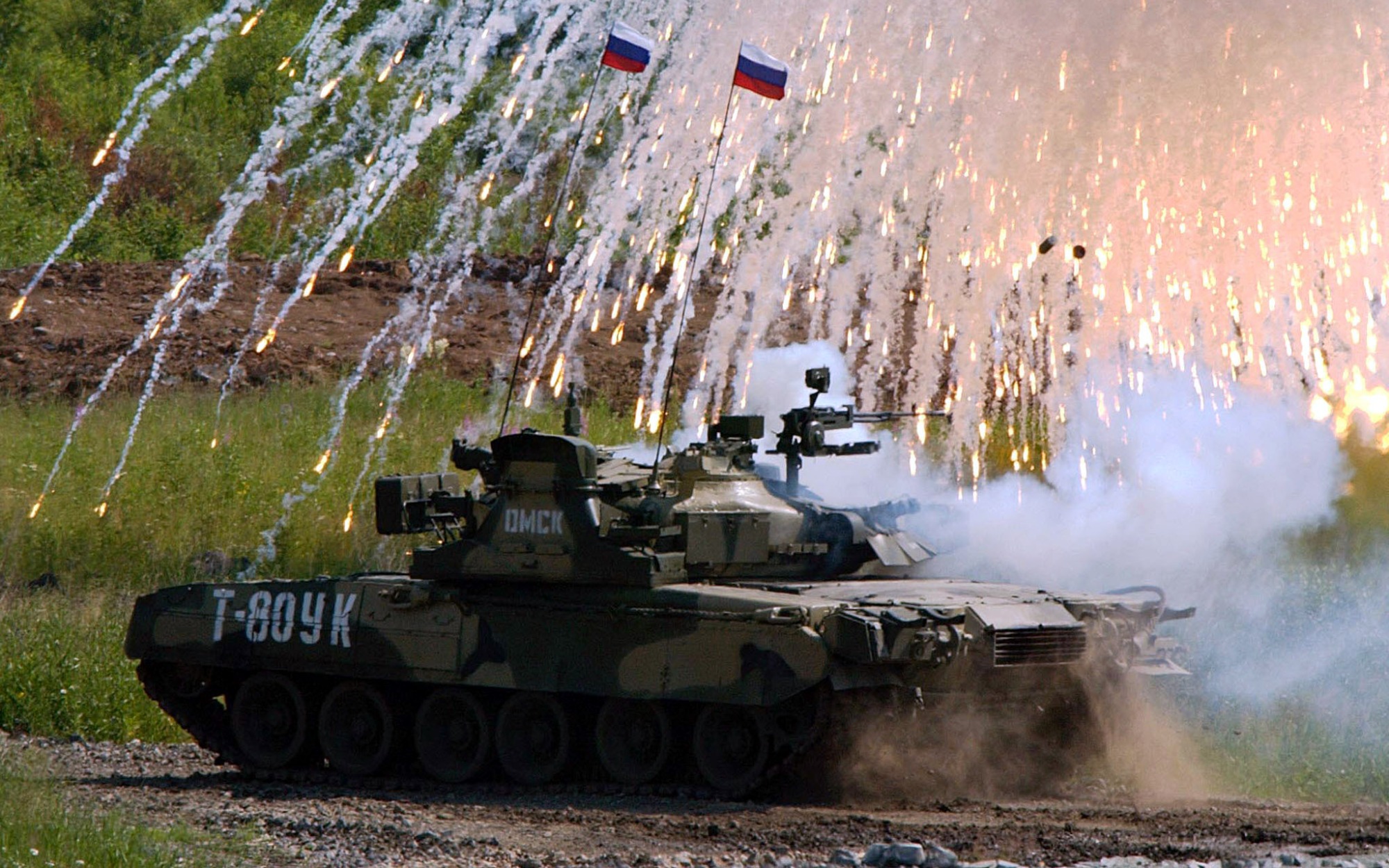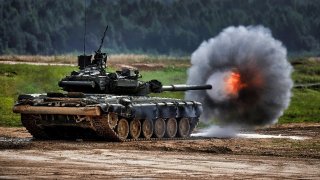'Steel Coffins': Russia Might Have Lost 8,000 Tank in Ukraine War
Russia's invasion of Ukraine has resulted in significant tank losses, with estimates ranging from 3,000 to 8,000 tanks destroyed or captured. Early in the conflict, Ukrainian forces effectively used NATO-supplied Javelin anti-tank missiles, drones, and mines to repel Russian armored assaults.
What You Need to Know: Russia's invasion of Ukraine has resulted in significant tank losses, with estimates ranging from 3,000 to 8,000 tanks destroyed or captured. Early in the conflict, Ukrainian forces effectively used NATO-supplied Javelin anti-tank missiles, drones, and mines to repel Russian armored assaults.

-While these losses are substantial, Russia has adapted by shifting tactics, integrating tanks in supporting roles alongside infantry, artillery, and drones. The Russian military now relies more on older T-72 tanks, which continue to be effective.
-Despite the high attrition rate, Russia's larger resources and ability to sustain losses have allowed them to maintain their offensive, suggesting that tank losses alone are insufficient to determine the war's outcome.
Russia’s Tank Losses Are Great But Not Enough to Lose the War
Russia’s invasion of neighboring Ukraine has brought several issues to the fore in military affairs that many had assumed had long ago been settled. For starters, it is a tank war. This was something few analysts believed the world would witness in their lifetimes again, in the wake of the 9/11 attacks and the subsequent Global War on Terror (GWoT), which was primarily a counterterrorism and counterinsurgency conflict. But, everything old is new again, including trench warfare, it would seem.
Since the Russians consider the Ukraine War to be an existential one, Moscow has committed itself to a national struggle. In other words, all resources and people were made available for the war effort until Russian forces achieved victory. With that in mind, it’s important to understand the staggering number of losses in the Ukraine War.
Specifically, the attrition rate of Russian armor to Ukrainian anti-tank weapon systems, such as drones and Javelin missiles.
According to recent estimates from the war, there have been 3,000 visually confirmed Russian tank losses, fellow National Interest writer, Peter Suciu, reports the number higher, at around 8,000. Most of the tank systems lost in combat have been the more modern, expensive Russian tanks, such as the T-90M. Things have been so costly in terms of losing the more sophisticated Russian tanks that Moscow has ordered its most advanced Main Battle Tank (MBT), the T-14 Armata, to stand down.
Russia’s military is instead relying upon the Soviet-era T-72 MBT. That older, cheaper system is proving to do the trick for the Russian war effort in Ukraine.
Why is Russia Losing So Many Tanks?
When assessing why the Russians have lost so many tanks, it’s important to look at the start of the conflict in 2022. Moscow engaged in mass armored assaults that the Ukrainians were able to rebuff at several key moments in the early stages of the war.
This, again, was the result of Ukraine embracing asymmetrical warfare by arming their light infantry (normally the kind of forces that are chewed up by heavy armor formations) with NATO-provided Javelin anti-tank rockets and First-Person View (FPV) drones.
While the Javelins were effective at the outset of the war, the drones have proven to be an enduring threat to Russian MBT formations, which are far more numerous than what the Ukrainians should be able to withstand. But the drones have been a decisive advantage to the Ukrainians and a relatively cheap system that punches well above its weight, considering the kind of MBTs it has destroyed. What’s more, the drones are very difficult to detect and track until they are upon the targeted tank.
Very often, Russian tank crews are unable to defend themselves against the attacks.

Another classic strategy the Ukrainians have embraced has been the use of mines and booby traps for tanks. Using the terrain of their country, the Ukrainians have disabled many Russian MBTs that were attempting breakthroughs or maneuvers on the front that would have ordinarily decimated the Ukrainians.
While the frontlines in the conflict may have thus far remained frozen, the war is hardly static. Adaptations are occurring all the time by the combatants. Russian forces, while initially hardest hit by the innovative Ukrainian tactics, have begun a methodical adaptation in the way they’re going after the Ukrainian forces. One such adaptation has been the better coordination between tank units, artillery, and infantry. Plus, the Russians have become more cautious in their deployment of armor along the front.
Still, the Ukrainian drones have proven problematic for the Russians.
Russian Adaptations in the Ukraine Tank War
Yet, the Russians have continued their combined arms revolution. Russian forces have deprioritized MBTs. No longer the centerpiece of Russian ground operations, tanks have embraced a supporting role, augmenting Russian air defense, drone operations, electronic warfare (EW) mission sets, and, as mentioned, infantry and artillery attacks. Notably, Russian tanks are increasingly serving as mobile artillery or fortified breakthrough units.
And it’s working for Moscow.
To be clear: the Russians have taken heavy losses—far heavier than what most Western nations would be willing to tolerate. Yet, this is a classic Russian way of war. What’s more, the Russians are simply a larger foe than the Ukrainians. Ukraine went into the war with secondhand tanks, notably the Soviet-era T-64. They’ve increasingly been given sophisticated NATO systems, like the Leopard-2 MBTs and the U.S. Abrams MBT.
These systems have failed to alter the balance of forces in Ukraine’s favor on the front. They’ve also been destroyed and, in many cases, sidelined.
Plus, the Ukrainian population base has shriveled since the start of the war. Yes, similar trends have occurred in Russia. But Russia is a commodities superpower and is relatively insulated from the kind of pressures that America is subjecting Moscow to economically, thanks to Russia’s alliances with China, Iran, and even North Korea.
Frankly, the Russians can sustain the heavy losses at the front in ways the Ukrainians cannot, even with Kyiv utilizing these innovative and unconventional tactics.
It's easy to point out the massive number of Russian MBTs lost. The numbering is staggering…to a Westerner. These numbers are not, however, all that serious in the context of Russia’s long history of warfare against its neighbors. That’s something that should never be forgotten. Russia is losing a lot of its forces in combat. They’re still winning, though.
Author Experience and Expertise: Brandon J. Weichert
Brandon J. Weichert, a National Interest national security analyst, is a former Congressional staffer and geopolitical analyst who is a contributor at The Washington Times, the Asia Times, and The-Pipeline. He is the author of Winning Space: How America Remains a Superpower, Biohacked: China’s Race to Control Life, and The Shadow War: Iran’s Quest for Supremacy. His next book, A Disaster of Our Own Making: How the West Lost Ukraine, is due October 22 from Encounter Books. Weichert can be followed via Twitter @WeTheBrandon.
All images are Creative Commons or Shutterstock.
From the Vault
Russia Freaked Out: Why the U.S. Navy 'Unretired' the Iowa-Class Battleships
Battleship vs. Battlecruiser: Iowa-Class vs. Russia's Kirov-Class (Who Wins?)


